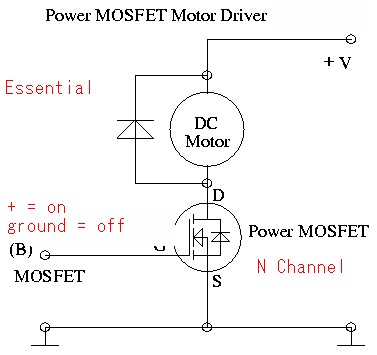MOSFET help PLEASE!
Hello folks,
I am in dire need of your assistance, I need to power a load with a 9V battery while using the parallax propeller as a switch. So I am using an IRF510 N channel mosfet but am having difficulty switching the mosfet on with the parallax microcontroller I/O pin. My schematic is attached. Both battery ground and microcontroller ground are connected. I am not too sure about adding resistors but would probably need some from the I/O pin to the gate. I would very much appreciate the help since this is urgent. I also have a 2N3055 Transistor if that is any better.
Thank you,
Robert
I am in dire need of your assistance, I need to power a load with a 9V battery while using the parallax propeller as a switch. So I am using an IRF510 N channel mosfet but am having difficulty switching the mosfet on with the parallax microcontroller I/O pin. My schematic is attached. Both battery ground and microcontroller ground are connected. I am not too sure about adding resistors but would probably need some from the I/O pin to the gate. I would very much appreciate the help since this is urgent. I also have a 2N3055 Transistor if that is any better.
Thank you,
Robert



Comments
It wants about 10V to go to full on...
Also, you should know that motors have a habit of inducing a lot of noise spikes on start and stop...
So you should have the motor on a seperate power supply...
Maybe you can use that transistor as a gate driver for the mosfet...
Robert
The IRF510 is just not suitable for a 3V drive.
The 2V to 4V spec is the threshold where it barely starts to turn on.
A much better MOSFET is the IRF3708.
Here is a graph of the performance I personally tested.
This will fill the bill.
You technically don't need a series resistor but 1K or so would be good.
And a 100K or so from gate to ground will make sure it stays off if the pin goes to input, as it will after a reset.
Duane J
I've tried using those and have not had good success.
The problem I have with them, is that when driving something like an LED, The LED does not turn off correctly.
I think that maybe the IRF 510 might not be suitable for your application.
Since you are powering the load with the most inefficient power source known to man, the common 9V battery, I can only conclude that it is a very light load so in which case just use the BJT to directly drive the load and forget about the MOSFET. You can even parallel the 3904 if that is all you have got.
EDIT: The 2222 is a much better bjt for this app as it can handle up to 1A.
Don't use the 3055, it's current gain is way too low for starters and the size of it is ridiculous. Anyway how much current could you possibly get from a 9V battery after all?
Robert
You mentioned you had 2N2222 which would be much better for this application so use them. If you need more current (or power handling) than one could handle (1A) then just use two or more in parallel except each base has it's own resistor (around 220R). Collector to Collector, Emitter to Emitter. Skip the MOSFET, just use the BJT, that is all the is necessary.
Regards,
Robert
Robert
PS - That gets a bit more complicated, however.
Try it with the NPN instead of the FET. With a 220ohm resistor between the Propeller pin and the base, emitter to Ground, and the motor between +V and collector. Then it'll be on with a HIGH out and off with a LOW out.
Definitely will do that in the future. Sadly, there isn't much of a mosfet selection for 1 day projects at RadioShack, i've learned my lesson for leaving things to the last minute..
That is quite a bit more complicated.. I guess choosing the right FET is the way to go.
PJ Allen: I will try this right now also, and let you know the results! What are the benefits of the BJT/mosfet combo as opposed to just the 2N2222 ? It handle more current correct?
Robert
It shows 12V, but just see that as "9V".